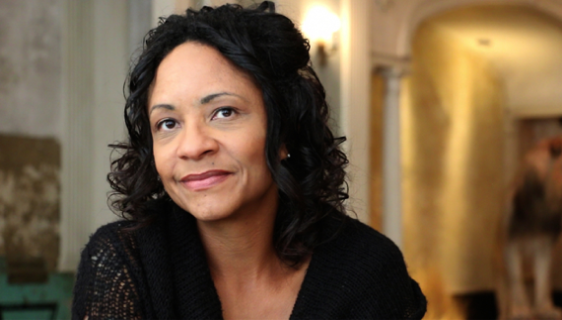From Chapter16: Candacy Taylor explores the history and legacy of Victor Hugo Green’s iconic travel guide
By Stephen Usery, for Chapter16.org
In 1936, New York mailman Victor Hugo Green began publishing the Green Book, an invaluable travel guide to help Black travelers, not only in the Jim Crow South but elsewhere in America where discrimination might be harder to spot and navigate around. (Later editions even included helpful advice on international travel.) Candacy Taylor’s Overground Railroad: The Green Book and the Roots of Black Travel in America is a richly illustrated history of the iconic guide that shows not only the hardships and obstacles facing Black Americans, but the joy and freedom they were able to experience while vacationing, as well. Taylor also collaborated with the Smithsonian for the exhibition The Negro Motorists’ Green Book and American Story, currently slated to open at the National Civil Rights Museum in Memphis in September 2020.

What follows is an edited excerpt from an interview conducted for WYPL-FM’s Book Talk program. (Access the full podcast and a video excerpt below.)
Chapter 16: With your books on Route 66 and coffee shop waitresses, you’ve had an interest in travel and hospitality for a while, haven’t you?
Candacy Taylor: I’ve been a travel writer for over 20 years, and I became more of a cultural documentarian once I started looking at diner waitresses. I was really interested in a subculture beyond just the interviews. I was in grad school getting my master’s degree in visual criticism, so there was also a lot of theory and things that I was studying that were well beyond just what you would imagine if you go into a diner and interview a diner waitress. There were all these other deeper layers that I was exploring. And so then it became more than just being a travel writer.
Chapter 16: When did the idea to write about the Green Books come to you?

Taylor: I was writing the book about Route 66, and when I was looking at all these other books that have been written about it, I noticed that 98% of them go back to these good old days that were full of sunshine and we just jumped in our Airstream trailer. It’s that nuclear family, and they were all white.
“Where are the Black people?” It was the first question, being Black myself, of how do they manage it? Because I learned about half of the counties along Route 66 had “sundown towns,” which were all-white towns that banned any Black people from coming in after 6 p.m. So how did Black people travel Route 66? I was then at the Autry Museum in 2013, and they had a Green Book tucked away in a corner. I had never seen it before. I’d never known such a thing existed. Then, the light bulb went off, and I thought, “Now it makes sense.” This is why I’m writing this book, this travel guide, because I was supposed to find the Green Book, because that’s my project.
Chapter 16: You wrote that you asked your stepfather about the Green Book because he grew up in the Jim Crow South. What was his experience with it?
Taylor: Well, as soon as I saw the Green Book in the Autry museum, I ran outside and I called my parents in Columbus, Ohio. My stepfather, Ron, remembered it and said, “Oh yeah, there were a few of those back then.” I was shocked because he had never really shared his stories of growing up in the Jim Crow South with me. He grew up here in Memphis, and he would often go back to visit family and friends. There were all of these quirky things he would do. Well, I thought they were quirky and just sometimes ridiculous. But now knowing what I know about this history after having written this book, I understand those were deep, deep scars of basic humiliation and fear.
He’d do things like only drive in the middle of the night on long trips. He’d leave at like 10 at night and I’d be so upset because I’d say, “Are you trying to kill my mother? You know, it’s not safe for her.” He could have gotten into an accident. I’d say, “Why are you driving in the middle of the night?” He would say, “Oh, traffic. I just want to beat traffic.” I was like, “Why would you risk your life and other people’s lives just for traffic?” I used to get really irritated with him, and now I realize that he was a large, dark-skinned Black man, and it was just so much easier for him to be invisible and drive at night.
[A review of Overground Railroad and a selection of photos from the book can be found here.]
Listen to or view the WYPL Book Talk interview:

Stephen Usery is the producer of Book Talk, an author interview program that airs Saturdays at 11:30 a.m. Central Time on WYPL FM 89.3, a service of Memphis Public Libraries. He lives in Memphis.

